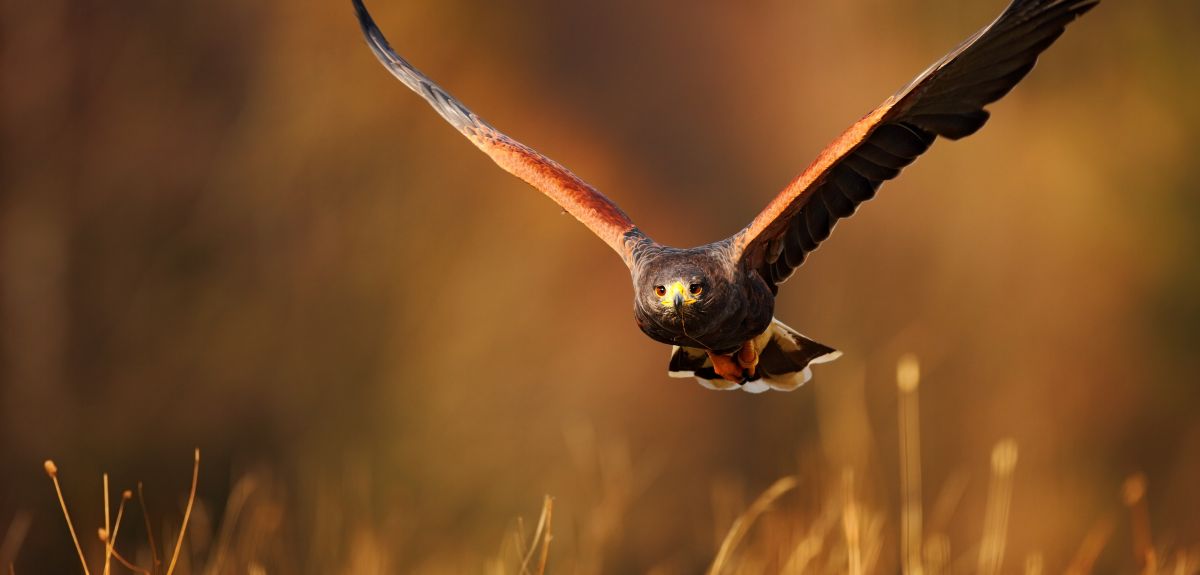
Credit: Shutterstock
Scientists discover hawks’ pursuit of prey has implications for capturing rogue drones
Hawks steer their pursuit of evasive prey using a feedback system that differs fundamentally from the missile-like interception system of falcons, according to a new study led by scientists at the University of Oxford, Department of Zoology, published today in Nature Communications.
This mixed guidance law allows hawks to pursue agile prey through cluttered habitats without being thrown off the pursuit by the prey’s erratic escape manoeuvres.
Previous research has shown that falcons intercept prey using the same guidance law as homing missiles, called proportional navigation. This guidance law is optimal against smoothly-manoeuvring aerial targets, but is prone to being thrown off by the zigzagging manoeuvres of terrestrial prey like hares or jackrabbits, and will not necessarily lead to a feasible flight path through the cluttered habitats that hawks frequent.
University of Oxford researchers, Dr Caroline Brighton and Prof Graham Taylor, used high-speed cameras to capture the flight trajectories of five captive-bred Harris’ Hawks during 50 flights against an erratically-manoeuvring artificial target.
Dr Brighton said: ‘We filmed our hawks flying after a dummy bunny, which was an artificial target that we towed at speed around a series of pulleys laid out to produce an unpredictable course. Using video reconstruction techniques to measure the 3D trajectory of the hawk and its target, we then ran a computer simulation to see how closely the hawk’s attack behaviour was modelled by different kinds of guidance law.’
The researchers found that Harris’ Hawks use a mixed guidance law, in which their turn rate is determined by feeding back information on the angle between the direction to their target and their current flight direction, together with information on the rate at which the direction to their target is changing. The researchers argue that this mixed guidance law reduces the risk of overshoot in the close pursuits to which hawks are adapted, but would produce an inefficient flight path if used in the long-range interception behaviours of falcons.
The findings have applications to the design of drones for pursuing and capturing rogue drones in cluttered environments.
Prof Taylor said: ‘Last year's Gatwick incident showed just how far we are from being able to remove rogue drones quickly and safely from a large open space, let alone the cluttered airspace of an urban environment. Hawks are masters of close pursuit through clutter, so we think they have a thing or two to teach us about how to design a new kind of drone that can safely chase down another.’
This project has received funding from the European Research Council (ERC) under the European Union’s Horizon 2020 research and innovation programme (Grant Agreement No. 682501).
 Expert Comment: Why has Trump launched so many tariffs and will it cause a recession?
Expert Comment: Why has Trump launched so many tariffs and will it cause a recession?
 Expert Comment: Is it possible to support both AI innovation and human creativity?
Expert Comment: Is it possible to support both AI innovation and human creativity?
 Oxford unmasks the fraudsters behind the forgeries for April Fakes Day 2025
Oxford unmasks the fraudsters behind the forgeries for April Fakes Day 2025